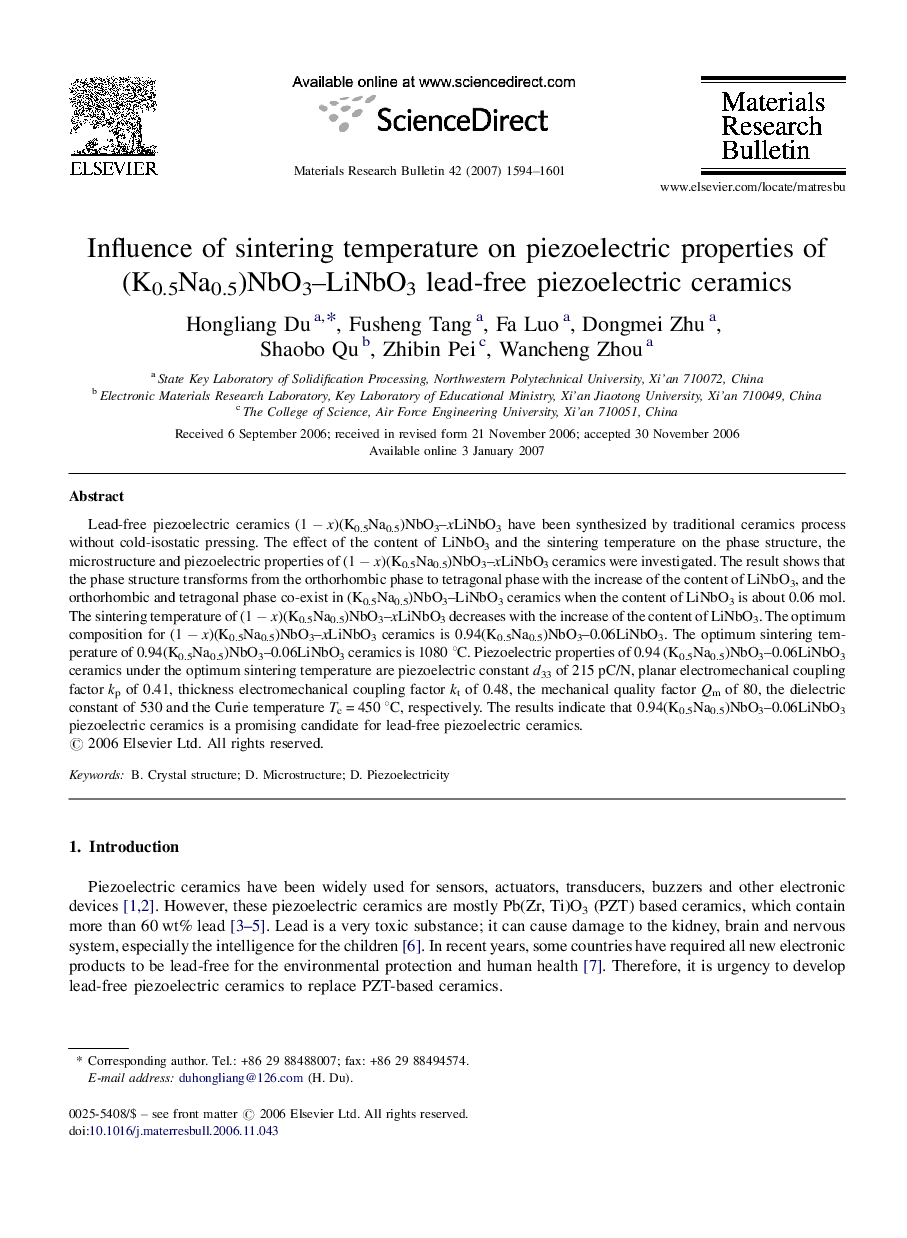| Article ID | Journal | Published Year | Pages | File Type |
|---|---|---|---|---|
| 1492031 | Materials Research Bulletin | 2007 | 8 Pages |
Lead-free piezoelectric ceramics (1 − x)(K0.5Na0.5)NbO3–xLiNbO3 have been synthesized by traditional ceramics process without cold-isostatic pressing. The effect of the content of LiNbO3 and the sintering temperature on the phase structure, the microstructure and piezoelectric properties of (1 − x)(K0.5Na0.5)NbO3–xLiNbO3 ceramics were investigated. The result shows that the phase structure transforms from the orthorhombic phase to tetragonal phase with the increase of the content of LiNbO3, and the orthorhombic and tetragonal phase co-exist in (K0.5Na0.5)NbO3–LiNbO3 ceramics when the content of LiNbO3 is about 0.06 mol. The sintering temperature of (1 − x)(K0.5Na0.5)NbO3–xLiNbO3 decreases with the increase of the content of LiNbO3. The optimum composition for (1 − x)(K0.5Na0.5)NbO3–xLiNbO3 ceramics is 0.94(K0.5Na0.5)NbO3–0.06LiNbO3. The optimum sintering temperature of 0.94(K0.5Na0.5)NbO3–0.06LiNbO3 ceramics is 1080 °C. Piezoelectric properties of 0.94 (K0.5Na0.5)NbO3–0.06LiNbO3 ceramics under the optimum sintering temperature are piezoelectric constant d33 of 215 pC/N, planar electromechanical coupling factor kp of 0.41, thickness electromechanical coupling factor kt of 0.48, the mechanical quality factor Qm of 80, the dielectric constant of 530 and the Curie temperature Tc = 450 °C, respectively. The results indicate that 0.94(K0.5Na0.5)NbO3–0.06LiNbO3 piezoelectric ceramics is a promising candidate for lead-free piezoelectric ceramics.
